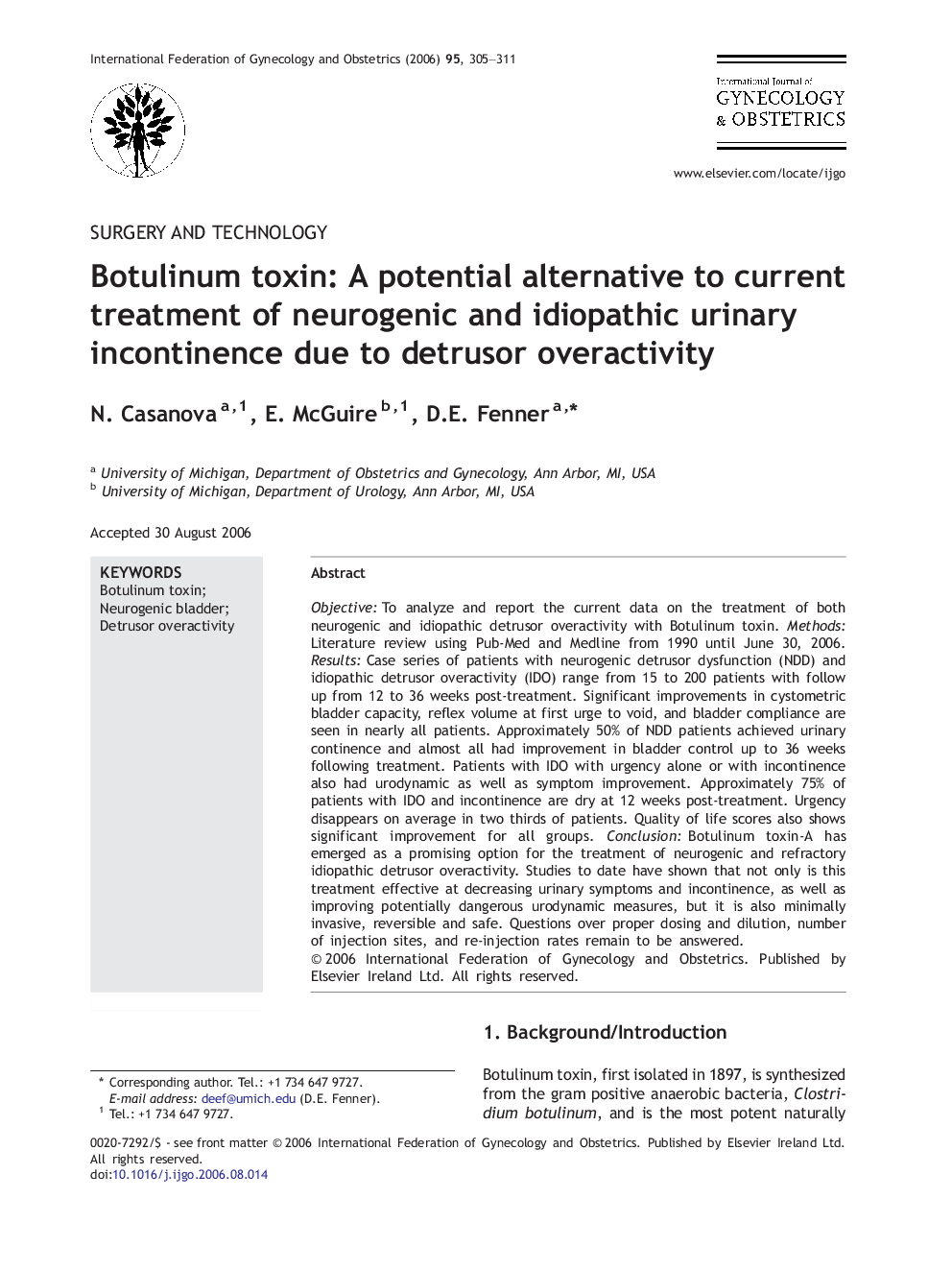| Article ID | Journal | Published Year | Pages | File Type |
|---|---|---|---|---|
| 3950483 | International Journal of Gynecology & Obstetrics | 2006 | 7 Pages |
Objective:To analyze and report the current data on the treatment of both neurogenic and idiopathic detrusor overactivity with Botulinum toxin.Methods:Literature review using Pub-Med and Medline from 1990 until June 30, 2006.Results:Case series of patients with neurogenic detrusor dysfunction (NDD) and idiopathic detrusor overactivity (IDO) range from 15 to 200 patients with follow up from 12 to 36 weeks post-treatment. Significant improvements in cystometric bladder capacity, reflex volume at first urge to void, and bladder compliance are seen in nearly all patients. Approximately 50% of NDD patients achieved urinary continence and almost all had improvement in bladder control up to 36 weeks following treatment. Patients with IDO with urgency alone or with incontinence also had urodynamic as well as symptom improvement. Approximately 75% of patients with IDO and incontinence are dry at 12 weeks post-treatment. Urgency disappears on average in two thirds of patients. Quality of life scores also shows significant improvement for all groups.Conclusion:Botulinum toxin-A has emerged as a promising option for the treatment of neurogenic and refractory idiopathic detrusor overactivity. Studies to date have shown that not only is this treatment effective at decreasing urinary symptoms and incontinence, as well as improving potentially dangerous urodynamic measures, but it is also minimally invasive, reversible and safe. Questions over proper dosing and dilution, number of injection sites, and re-injection rates remain to be answered.
